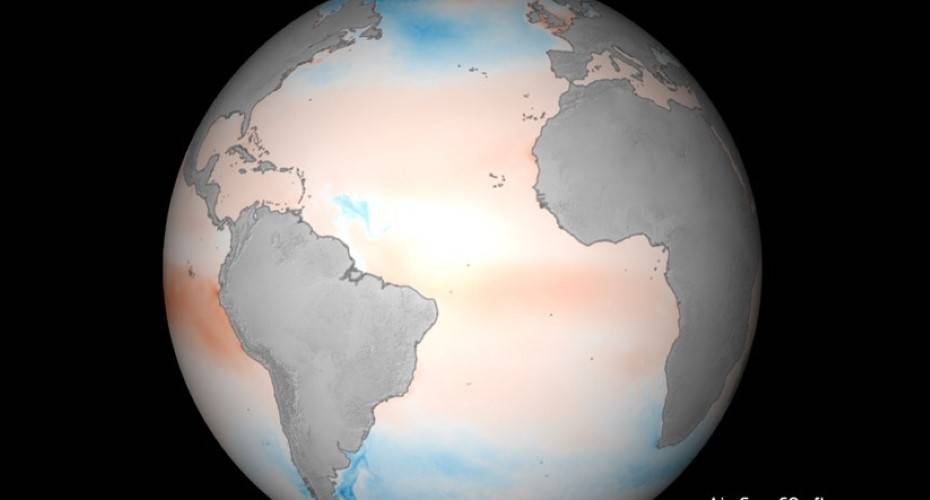High-Resolution Mapping Reveals Carbon Sink Details – Marine Technology News

Satellite-Based Mapping of Ocean Carbon Sink Advances Sustainable Development Goals
Introduction
A new satellite-based product has been developed to map the ocean carbon sink at an unprecedented resolution. This advancement supports several Sustainable Development Goals (SDGs), particularly SDG 13 (Climate Action) and SDG 14 (Life Below Water), by enhancing understanding of oceanic carbon uptake and its environmental impacts.
Ocean Carbon Sink and Its Environmental Impact
- The ocean acts as a significant sink for human-induced carbon dioxide, helping to mitigate global warming (SDG 13).
- This carbon uptake results in ocean acidification, characterized by reduced seawater pH and altered carbonate chemistry.
- Ocean acidification adversely affects marine organisms and ecosystems, directly relating to SDG 14, which aims to conserve and sustainably use the oceans, seas, and marine resources.
Challenges in Monitoring Ocean Carbon Sink
- Existing global datasets provide only monthly data with spatial resolutions of approximately 100 by 100 kilometers, limiting the ability to detect short-term and fine-scale variability.
- Direct measurements of surface ocean carbon dioxide are sparse across regions and times, complicating efforts to increase data resolution.
Innovative Approach Using Machine Learning and Satellite Data
Researchers from ETH Zurich University, led by Nicolas Gruber, have developed a new version of the OceanSODA-ETHZ product that addresses these challenges:
- Utilizes a creative combination of machine learning methods to generate a global, gridded dataset of surface ocean carbon dioxide and carbonate system parameters.
- Provides data every eight days at a spatial resolution of approximately 25 by 25 kilometers, improving resolution by over 30 times compared to previous products.
- Incorporates satellite data to interpolate measurements in both time and space, enhancing the accuracy and detail of ocean carbon sink mapping.
Visualization and Application
An animation visualizes the exchange of carbon dioxide between the atmosphere and ocean over a period that includes multiple hurricanes in the Atlantic Ocean:
- Blue regions indicate oceanic uptake of carbon dioxide.
- Red regions show areas where carbon dioxide is released into the atmosphere.
- Arrows represent surface ocean winds, illustrating environmental dynamics.
Professor Jamie Shutler from the University of Exeter highlights the dataset’s ability to capture fine-scale events such as hurricanes, which can cause sudden changes in surface ocean carbon dioxide by bringing carbon-rich deep water to the surface.
Implications for Sustainable Development Goals
- SDG 13 – Climate Action: Enhanced monitoring of the ocean carbon sink supports climate change mitigation efforts by improving understanding of carbon fluxes and their variability.
- SDG 14 – Life Below Water: Detailed data on ocean acidification and carbon dynamics aid in protecting marine biodiversity and ecosystems.
- SDG 9 – Industry, Innovation, and Infrastructure: The use of advanced machine learning and satellite technologies exemplifies innovation in environmental monitoring.
- SDG 17 – Partnerships for the Goals: The collaboration between universities and research institutions fosters global partnerships for sustainable ocean management.
Conclusion
This new high-resolution ocean carbon sink dataset opens new opportunities for scientific research and policy-making aimed at mitigating climate change and preserving marine ecosystems. By capturing small-scale and short-term variations, it provides critical insights necessary for achieving the Sustainable Development Goals related to climate action and ocean health.
1. Sustainable Development Goals (SDGs) Addressed or Connected
- SDG 13: Climate Action
- The article discusses the ocean carbon sink’s role in reducing global warming by absorbing human-induced carbon dioxide.
- It highlights the importance of understanding carbon dioxide exchange between the ocean and atmosphere, which is critical for climate change mitigation.
- SDG 14: Life Below Water
- The article focuses on ocean acidification caused by increased carbon dioxide uptake, which affects marine organisms and ecosystems.
- It emphasizes the need to monitor and understand changes in ocean chemistry and marine environments.
2. Specific Targets Under Those SDGs Identified
- SDG 13: Climate Action
- Target 13.3: Improve education, awareness-raising and human and institutional capacity on climate change mitigation, adaptation, impact reduction, and early warning.
- Target 13.2: Integrate climate change measures into national policies, strategies, and planning (implied through improved data and understanding of carbon sinks).
- SDG 14: Life Below Water
- Target 14.3: Minimize and address the impacts of ocean acidification, including through enhanced scientific cooperation at all levels.
- Target 14.2: Sustainably manage and protect marine and coastal ecosystems to avoid significant adverse impacts (implied by monitoring changes in marine ecosystems due to acidification).
3. Indicators Mentioned or Implied to Measure Progress
- Indicator for SDG 13 (Climate Action)
- Measurement of atmospheric and oceanic carbon dioxide exchange rates (implied by the satellite-based dataset mapping ocean carbon sink).
- Frequency and resolution of data on ocean carbon uptake (e.g., data every eight days at 25×25 km resolution).
- Indicators for SDG 14 (Life Below Water)
- Changes in seawater pH and carbonate chemistry as measures of ocean acidification.
- Spatial and temporal variability of ocean carbon sink and acidification impacts on marine ecosystems.
- Occurrence and impact of events like hurricanes on ocean carbon dynamics (implied by the dataset’s ability to capture small-scale changes).
4. Table: SDGs, Targets and Indicators
| SDGs | Targets | Indicators |
|---|---|---|
| SDG 13: Climate Action |
|
|
| SDG 14: Life Below Water |
|
|
Source: marinetechnologynews.com








